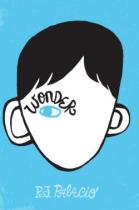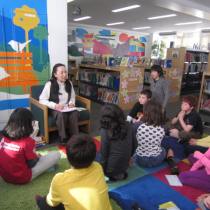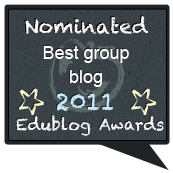 I am an advocate of reading aloud to children, and I teach grade 5. I feel like it’s a confession. It’s the first step, and one I would hope everyone would follow.
I am an advocate of reading aloud to children, and I teach grade 5. I feel like it’s a confession. It’s the first step, and one I would hope everyone would follow.
In the early grades, I think most teachers read to children because they can’t read too well themselves. However, as children get older, reading aloud seems to diminish. When I ask my students in grade 5 how many of them have parents who read aloud, sometimes one child raises his or her hand. Sometimes, I have a class where no one raises their hand.
This year, we’ve read Wonder, Alexandria of Africa, The Hunger Games, The One and Only Ivan, Peak, Owen and Mzee, and Sadako outloud. My 10, 11 and 12-year old students have settled into our cozy rug space and listened after lunch as we’ve explored new fictional worlds. We’ve learned about high altitude sickness and the terror and passion of climbing in Peak. We’ve learned about tolerance and human nature in our all-time favorite, Wonder. We’ve traveled to Africa and been right along with Alexandria as she changed from a troubled teen into someone who cares a lot for others. We’ve cheered for Katniss as she’s battled her way through The Hunger Games. And we’ve been saddened by Ivan’s plot in The One and Only Ivan and wanted to find out more.
Reading has led to inquiry. We often watch videos related to the book like Alexandria of Africa. We’ve seen safaris and learned more about the Masai. We’ve investigated animal treatment and zoos because of The One and Only Ivan. We inquired into probability when reading The Hunger Games. Books spark conversation and inquiry, and together we inquire.
Books have also helped us connect. Just today, when we found out about Mark Wood, explorer, who was turned back on his summit attempt to Mt. Everest, the students immediately said, “Man, it’s just like Peak in the book (Peak).” When they read another book about a boy with autism who was bullied, they immediately thought of Auggie in Wonder. Sadako last year caused a major crane making spree and led us to connect to a school up in Tohoku, Japan, that had been affected by the earthquake.
Finally, read alouds let us connect with each other. It’s our shared reading time. As a class, we come together for an experience. I hear students talking about our books afterward with each other, and I hear from their parents too. It’s our cozy time, and my grade 5 students have always come running in after break, excited to be a part of it.
I was happy to have read KQED’s Mind/Shift’s “Why Reading Aloud is valuable to Older Children,” recently where they talked about the power of a read aloud.
“The first reason to read aloud to older kids is to consider the fact that a child’s reading level doesn’t catch up to his listening level until about the eighth grade,” said Trelease, referring to a 1984 study performed by Dr. Thomas G. Sticht showing that kids can understand books that are too hard to decode themselves if they are read aloud. “You have to hear it before you can speak it, and you have to speak it before you can read it. Reading at this level happens through the ear.”
With all kids, and especially our EAL students in international schools, reading aloud has power. One of my students who struggles with reading loves to listen to a read aloud, and his comprehension has gone way up.
Mind/Shift said: “This is a time — tweens, teens — when life is full of craziness. This is one way to have a place of rest, of being, something to count on each day. Shared words have power, an energy that you can’t get from TV, radio, or online,”…said Dr. Jessica Voight.
And I agree. Upper elementary years and Middle School is a time of transition for the students. Coming in for a read aloud is a safe place. In the article, they mention how a retired teacher reconnected online with former students some 30 years later. She wanted to know the one thing her former students remembered about her class.
“Without fail, it was the books she read to them.”
I too believe in the power of a read aloud.



Agree! Love my read aloud time. It creates a sense of mythology and a shared culture. Something that only the people who were there can get.
LikeLike
My students and I all love our read aloud time. It gives us so many opportunities to talk and learn together. It is a powerful shared experience, as @dwyerteacher says.
Oral story sharing has been around forever. Must be a reason for it.
LikeLike
Reading aloud is amazing. I have done so in every grade I’ve taught, from Grade 1 to Grade 8. And not once have the children complained, in fact, they enjoyed every minute of it.
LikeLike
At Teachers College, we had a language arts teacher every second Friday at 8:30 in the morning (and no one ever skipped that class). He’d start the class reading a book to us (funny, serious, sad) and we’d discuss why or how you could use the book with different classes. One morning he came in and started teaching. We all complained that he hadn’t started by reading to us. He explained that his point was how important reading aloud is at any age! I’ve never forgotten. Thanks for reminding us.
LikeLike
By the way, I was in teachers college in 1977/8.
LikeLike
Absolutely! I’ve taught reading in grades 5-8, and read out loud with all of them. I love it, and the kids loved it. I especially enjoy reading “children’s” picture story books to older students. There’s a different level of humor that they connect with at that age.
LikeLike
I had a wonderful teacher in grade five who read aloud to us every day afer lunch. It was scheduled for 15 minutes, but sometimes she (and we) would get so caught up in the story that she couldn’t stop, and the period would get extended for five, ten, fifteen minutes before we went on to the business of the afternoon. That was a great thing to learn–that sometimes a story is so good, you just can’t stop!
I used to read aloud to adult literacy students too, because, as you said children do, they can understand and discuss text far beyond their reading level. Hearing me also gives them the opportunity to hear reading done well, which likely never happens anywhere else (unless they go to church.)
LikeLike
Pingback: The Importance of Reading Aloud- Charlotte Mason Style | Maverick Mom
Pingback: Reading Novels Aloud | M. Q. Allen
I, too, believe that this is so important. I teach grade 4. This year we have read: Fablehaven, The Hobbit, Sahara Special, Regarding the Fountain, Truth and Salsa, The Genius Files, and Me & My Little Brain. I have just read (to myself) a great book called Okay Now. I think it would be more appropriate for 5th grade or 6th. About an abused boy and how people’s perceptions about others can be wrong. Also, to not pre-judge.
LikeLike
Thanks for some great book suggestions! I’m looking them up now. Do you think you would need to read the companion book to Okay for Now before reading it (something about Wednesdays?) It looks good. This year I’m also reading The Giver to my students, and we are loving it. Best for grade 5 and up, I think. There’s a follow-up to it called Son, which I might read to them as well as we’re all very engaged in the story. I love reading aloud to them! Thanks for the comments.
LikeLike